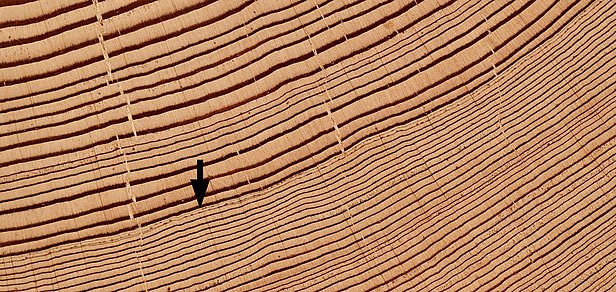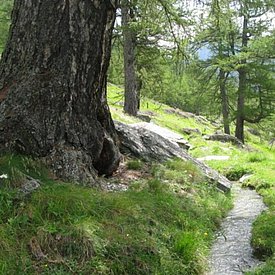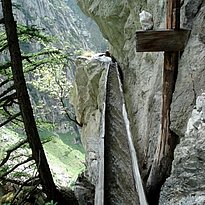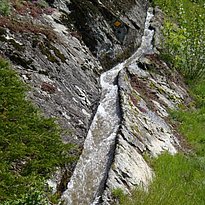A fascinating puzzle ¶
A major change is taking place in the immediate surroundings of the larch which will limit its long-term growth.
Faced with the growth reduction of single trees, as is the case with this larch, researchers can only make best guesses. One possibility is that a loss of part of the crown occurred, for example due to an avalanche, a lightning strike or rockfall. This would have caused fewer needles to be available for photosynthesis, less carbon dioxide (CO2) absorbed from the atmosphere and less carbon processed into wood, resulting in narrower tree rings all around the trunk.
This, however, is challenged by the fact that no traumatic resin channels - typical reactions to injuries - are visible in the years following growth reduction. In addition, the tree-ring widths would have gradually returned to their previous levels after the crown recovered. Last, but not least, the forester did not notice any old crown injury when he felled the larch.
Another possibility is that a sudden change in the underground water supply occurred, which would have permanently restricted water and nutrient availability.
Such a change could have been caused by a landslide or the construction of a suone. In Valais, suonen are historical, mostly-open water pipes with a slight slope, leading the waters of torrents and mountain rivers to irrigate fields, meadows and crops. Some suonen were built in the Middle Ages.
Indeed, 50 meters above the place where the larch stood, there is a pasture hut, which increases the likelihood of a former suone in this area. To validate this hypothesis, however, researchers would have to investigate local hydrological conditions.



